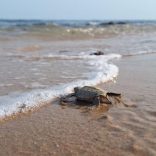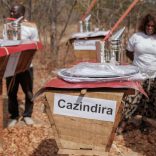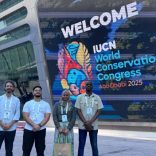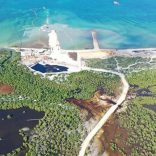Mozambique's Maputo National Park and nesting sea turtles highlighted in World Heritage nomination ...
Human-wildlife conflict claims 94 people, 124 animals in Tete – Mozambique

Stock
In just two years, 94 people have died and 76 suffered severe injuries as a result of wild animal attacks in Tete province, head of the conservation department at the Provincial Directorate of Land, Environment and Rural Development Óscar Nicolau Zalimba has revealed.
The Zambezi River, which runs through the vast expanse of Tete province, is the main habitat for crocodiles and hippopotamuses, which sometimes destroy fishermen’s canoes. The river also serves as a watering place for other dangerous animals, not to mention the elephants that routinely tread their traditional paths.
Óscar Zalimba said that in comparison with last year there was a reduction in the number of deaths in Tete, thanks to the intensification of the measures taken to reduce confrontations between wildlife and man.
Of the total of 94 deaths, 38 were recorded last year and 56 in 2016, with crocodiles, elephants, hippos, buffalo, leopard and hyena causing most of the deaths in Mágoè, Mutarara, Marara, Marávia, Dôa and Zumbu districts, as well as the city of Tete.
The district of Mágoè stood out last year with 25 victims, followed by Mutarara with eight , Marara with four and Zumbu with one.
“Zumbu also recorded 10 wounded, Mutarara had eight, while the city of Tete and Marara had four people injured each and Dôa registered one person wounded,” Zalimba added.
Domestic animals such as oxen, goats and dogs, have also been attacked and killed, while hippo and elephant destroyed 45.75 hectares of crops in the Zumbu district and another 22.25 hectares in Mágoè.
Animals killed
To minimise deaths, animals were sometimes killed, Zalimba said. In the two years in question, 102 crocodiles were killed, 57 of them last year and 45 in 2016.
“Four elephant were killed last year, against three of 2016 [a total of seven elephants], six hippos, against four [a total of 10 hippos], a hyena and a leopard, against the same number of buffalo, hyena and leopard in 2016 [a total of five animals],” he detailed.
Zalimba stressed that killing troublesome animals was a last resort, and chasing them off always preferred and tried first. “Killing is highly selective, to avoid the extinction of species,” he emphasised.
In 2016 and 2017, 96,000 crocodile eggs were collected, this being the species that causes most deaths in Tete province.
“The collection of eggs aims to reduce the number of the reptiles, which abound on the Zambezi. This measure has contributed greatly to the reduction in the number of deaths last year compared to 2016,” Zalimba maintains.
By António Chimundo












Leave a Reply
Be the First to Comment!
You must be logged in to post a comment.
You must be logged in to post a comment.